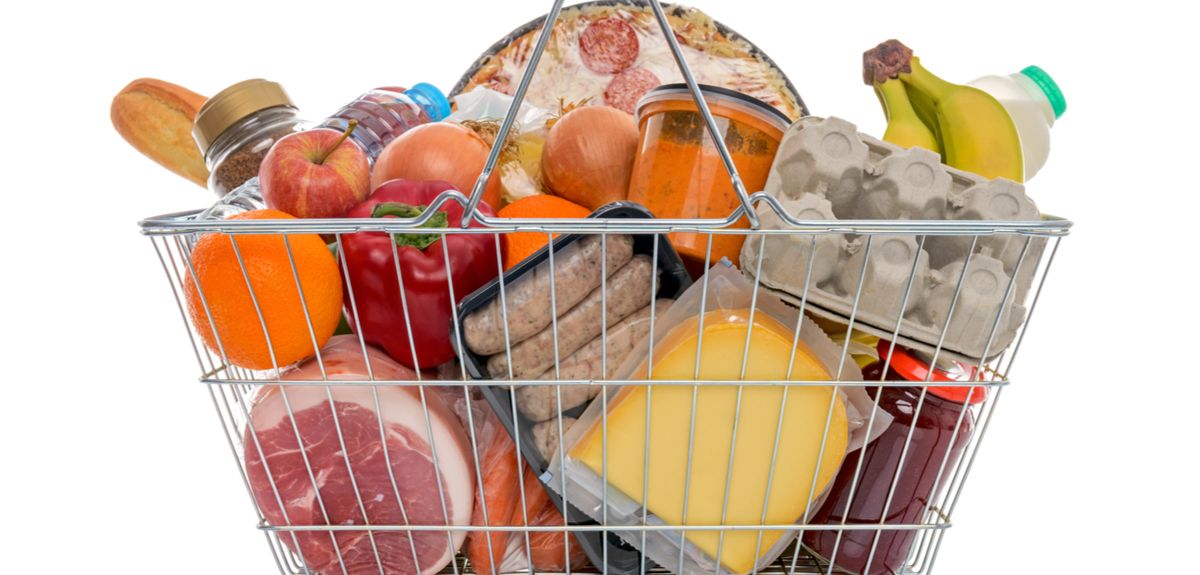
Image credit: Shutterstock
British packaged food crowned the healthiest in the world
A global survey has found that when it comes to having the healthiest packaged foods and drinks, the UK tops the charts, with the USA in 2nd place and Australia coming in at 3rd.
The George Institute for Global Health at the University of Oxford analysed more than 400,000 food and drink products from 12 countries and territories around the world. The survey highlights the high levels of sugar, saturated fat, salt and calories/kJ in many of our favourite food items.
The countries were ranked using Australia’s Health Star Rating system – which measures the levels of the nutrients such as energy, salt, sugar, saturated fat as well as protein, calcium and fibre and assigns a star rating from ½ (least healthy) to 5 (the most healthy).
It found that the UK had the highest average Health Star Rating of 2.83, followed by the US at 2.82 and Australia at 2.81. India got the lowest rating of just 2.27 followed by China at 2.43 with Chile coming third from bottom at 2.44. The results were published in Obesity Reviews.
Lead author Dr Elizabeth Dunford said the results were concerning because packaged foods and drinks are driving a double burden of diet-related diseases in many low- and middle-income countries.
'Globally we’re all eating more and more processed foods and that’s a concern because our supermarkets’ shelves are full of products that are high in bad fats, sugar and salt and are potentially making us sick,' said Dr Dunford. 'Our results show that some countries are doing a much better job than others. Unfortunately it’s the poorer nations that are least able to address the adverse health consequences that have the unhealthiest foods.'
The report's key result's were:
- China’s drinks were some of the healthiest in the survey with an average Health Star Rating of 2.9 but packaged foods scored low at just 2.39.
- South Africa on the other hand scored low with its drinks at an average 1.92 Health Star Rating whilst its foods came in at 2.87.
- Canada topped the list for unhealthy salt levels in foods and drinks with an average of 291mg/100g of sodium, with the US coming in 2nd at 279mg/100g.
- The UK scored best for sugar at just 3.8 grams per 100 g with Canada second best at 4.6 grams per 100g.
- China’s packaged foods and beverages had the most harmful levels of saturated fat. They also scored worst for average sugar levels at 8.5 grams per 100 g (more than 2x the UK’s average) – with India in 2nd place at 7.3 grams per 100 g.
- India’s packaged foods and drinks were most energy dense (kilojoule content 1515 kJ/100g) and South African products were least energy dense at an average of just 1044kJ/100g.
Co-author Professor Bruce Neal, Acting Executive Director of The George Institute, Australia said with packaged foods progressively dominating the world’s food supply there was real cause for concern. 'Billions of people are now exposed to very unhealthy foods on a daily basis,' he said. 'The obesity crisis is just the first ripple of a tsunami of dietary ill health that is coming for us. We have to find a way that the food industry can profit from selling rational quantities of quality food, rather than deluging us with unhealthy junk. There are few greater priorities for human health.'
The report notes that many of the world’s major food and drink manufacturers have signed up to the International Food and Beverage Alliance and made pledges to reduce levels of salt, sugar and harmful fat and that these findings could provide an impetus for companies to improve the healthiness of their product ranges.
Data for this analysis were collated using The George Institute’s FoodSwitch program. The countries and territories included in this survey participate in The International Network for food and obesity/non-communicable diseases Research, Monitoring and Action Support (INFORMAS). The Health Star Rating system is a Trans-Tasman labelling system that is used in both Australia and New Zealand.
The full paper, 'A comparison of the healthiness of packaged foods and beverages from 12 countries using the Health Star Rating nutrient profiling system, 2013–2018,' can be read in Obesity Reviews.
 Oxford launches first human aerosol TB challenge trial
Oxford launches first human aerosol TB challenge trial
 Rees Centre report reveals challenges faced by Black and Asian kinship carers
Rees Centre report reveals challenges faced by Black and Asian kinship carers
 Expert Comment: The Modern Slavery Act at 10 – what have we learnt for human rights?
Expert Comment: The Modern Slavery Act at 10 – what have we learnt for human rights?